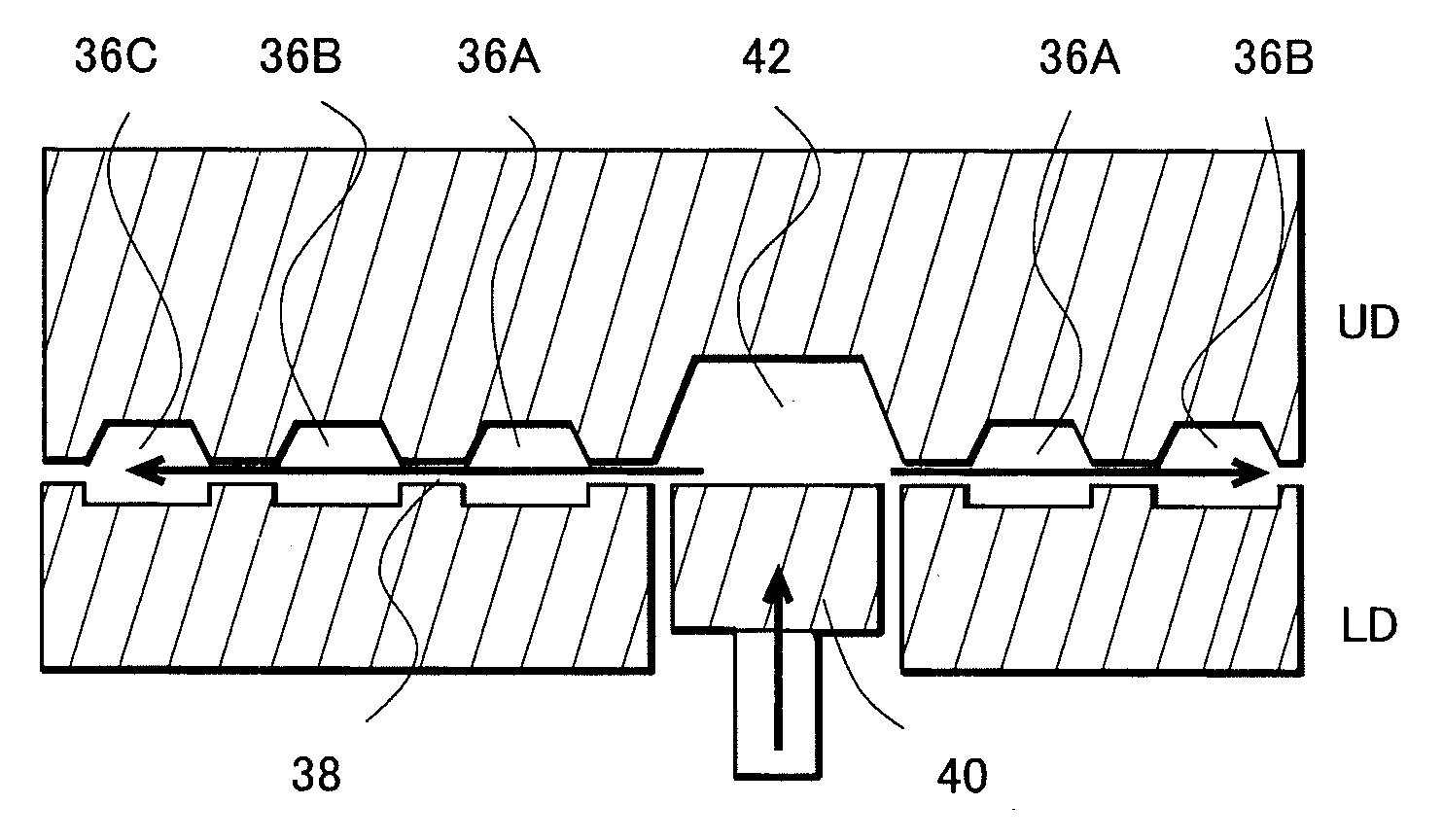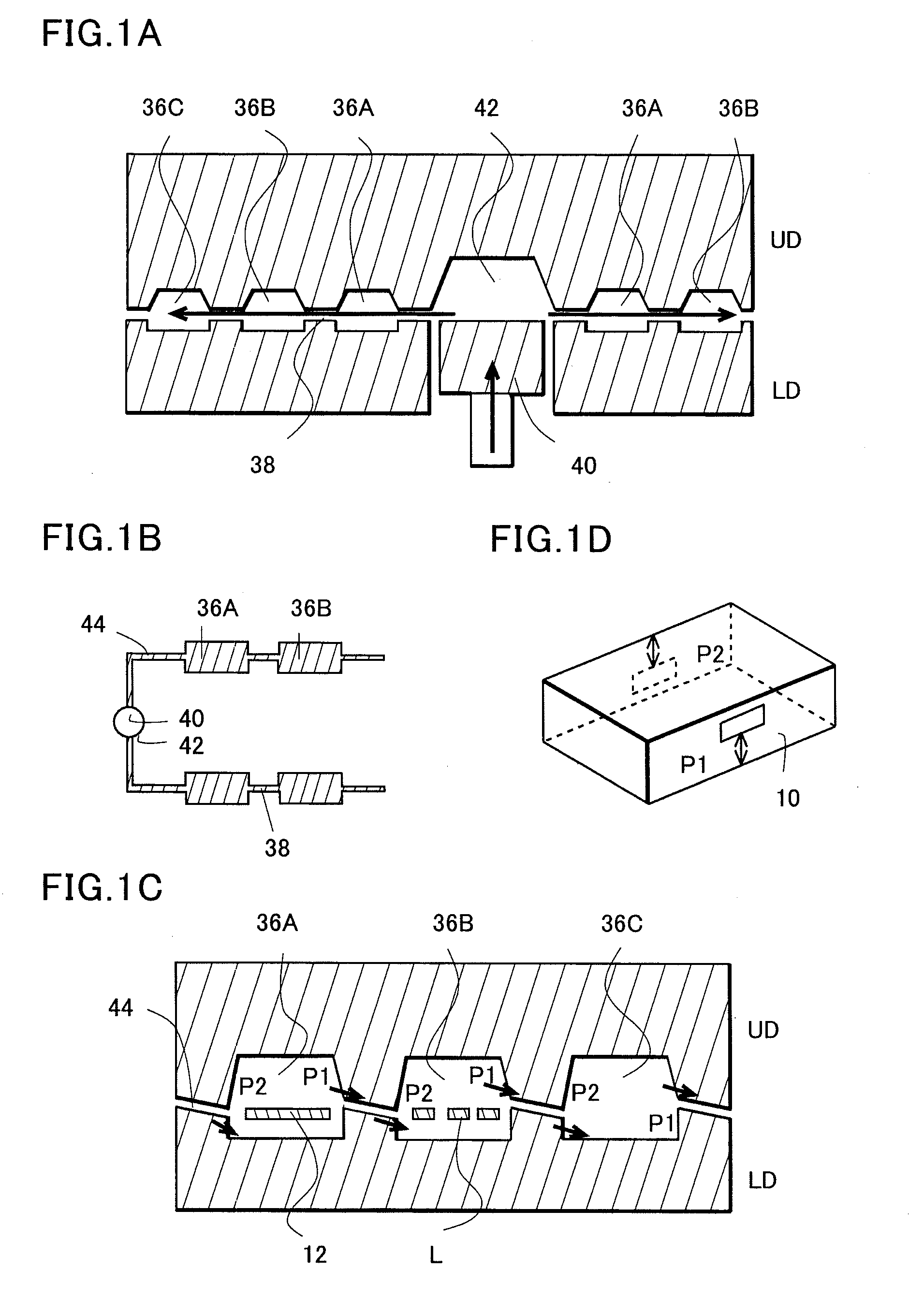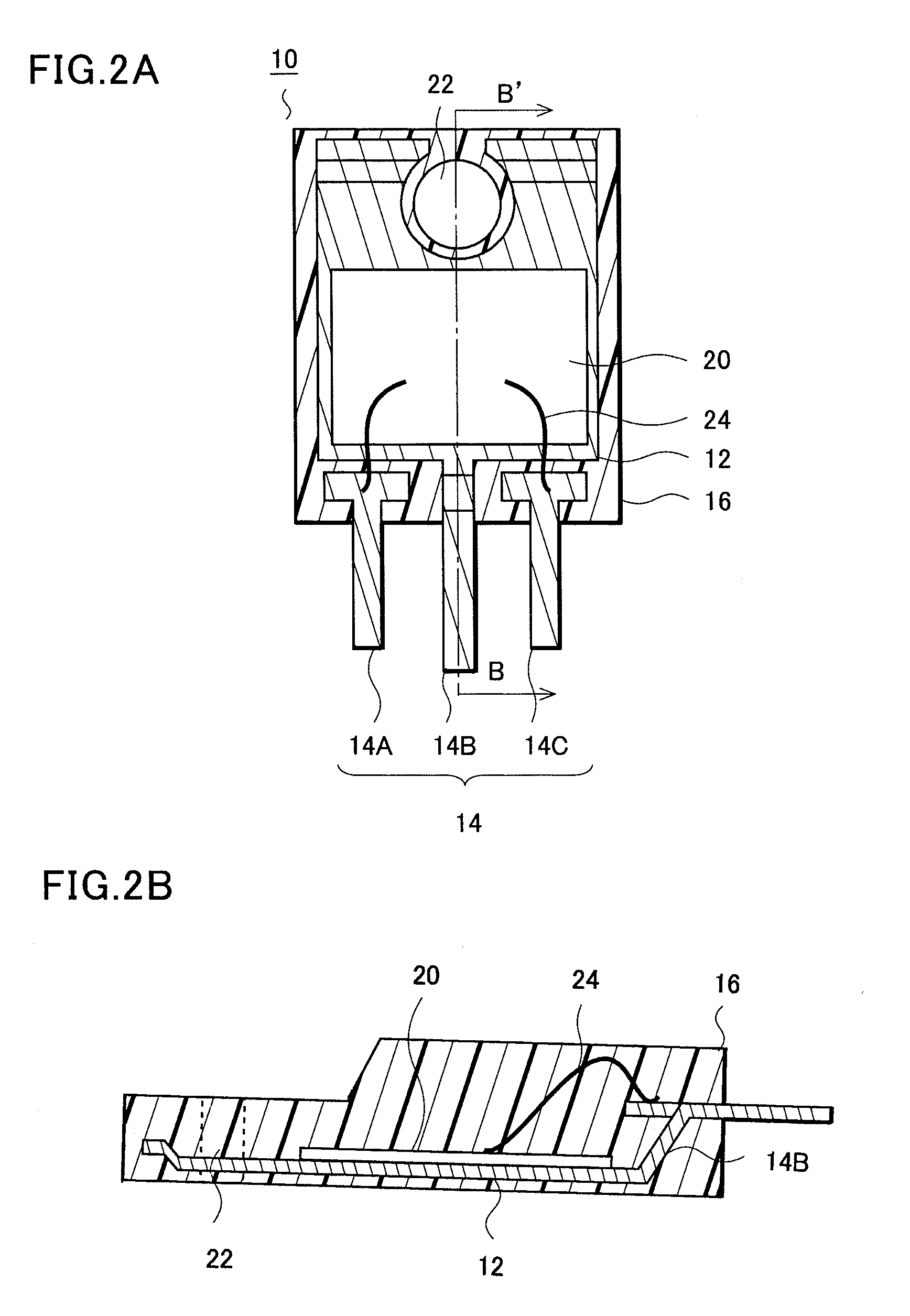Method for manufacturing semiconductor device, semiconductor device and molding die
a semiconductor device and molding die technology, applied in the direction of manufacturing tools, applications, drawing profiling tools, etc., can solve the problems of deterioration in moisture resistance, inability to obtain predetermined breakdown voltage, etc., and achieve the effect of reducing resin pressure and reducing the tilt of the island 12
- Summary
- Abstract
- Description
- Claims
- Application Information
AI Technical Summary
Benefits of technology
Problems solved by technology
Method used
Image
Examples
embodiment 1
[0044]With reference to FIG. 2, Embodiment 1 will be described. FIG. 2A is a plan view showing a semiconductor device 10 and FIG. 2B is a cross-sectional view taken along the line B-B′ in FIG. 2A.
[0045]The semiconductor device 10 is a discrete transistor, in which a back surface of an island 12 is covered with a resin, and is, for example, a 3-terminal package or a package such as TO220. This semiconductor device 10 mainly includes: the island 12; a semiconductor element 20 mounted on an upper surface of the island 12; a lead 14 which functions as an external connection terminal; and a sealing resin 16 integrally covering and mechanically supporting those described above. A lead 14B is extended integrally with the island 12 and serves as an electrode at a current outflow side (or inflow side). One of leads 14A and 14C serves as a control electrode and the other serves as an electrode at a current inflow side (or outflow side). Specifically, the semiconductor element 20 is a BIP Tr, ...
embodiment 2
[0052]With reference to FIGS. 3A to 6C, a method for manufacturing a semiconductor device will be described next.
[0053]With reference to FIG. 3A, an external shape of a lead frame 50 is a strip shape. Inside a frame-shaped outer frame 52, plural units 56 (mounting part) are formed in a matrix pattern.
[0054]FIG. 3B is a partially enlarged plan view of FIG. 3A. Here, tie bars 58 are extended so as to connect upper and lower outer frames 52. On the page space, the units 56A to 56D are arranged in a line on the left side and connected to each other by the tie bar 58, and the units 56E to 56H are arranged in a line on the right side and connected to each other by the tie bar 58.
[0055]Each of the units includes an island 12 and leads 14A to 14C. Moreover, one ends of the leads 14A and 14C are set close to the island 12 and the lead 14B is extended integrally with the island 12. Furthermore, intermediate portions and end portions of the leads 14A to 14C in the unit 56A are connected with t...
embodiment 3
[0077]Subsequently, with reference to FIGS. 8 to 12, description will be given of the fact that the present invention can also be applied to an IC. FIG. 8A shows a semiconductor device without an insulating resin. FIG. 8B is a cross-sectional view of the semiconductor device sealed with an insulating resin 106. The semiconductor device shown in FIGS. 8A and 8B includes: a rectangular island 100; lead groups 101 . . . , 101 . . . having one ends adjacent to left and right sides of the island 100; upper and lower suspension leads 102 extended outward from upper and lower sides of the island 100 and integrally holding the island; an IC chip 103 fixed on the island 100; and thin metal wires 105 electrically connecting bonding pads 104 on the chip 103 to the leads 101. The entire device is covered with the insulating resin 106 except for a portion corresponding to outer leads of the leads. Here, although two holding leads 102 are shown in FIG. 8, there may be at least one holding lead. N...
PUM
| Property | Measurement | Unit |
|---|---|---|
| current | aaaaa | aaaaa |
| thickness | aaaaa | aaaaa |
| thickness | aaaaa | aaaaa |
Abstract
Description
Claims
Application Information
 Login to view more
Login to view more - R&D Engineer
- R&D Manager
- IP Professional
- Industry Leading Data Capabilities
- Powerful AI technology
- Patent DNA Extraction
Browse by: Latest US Patents, China's latest patents, Technical Efficacy Thesaurus, Application Domain, Technology Topic.
© 2024 PatSnap. All rights reserved.Legal|Privacy policy|Modern Slavery Act Transparency Statement|Sitemap



